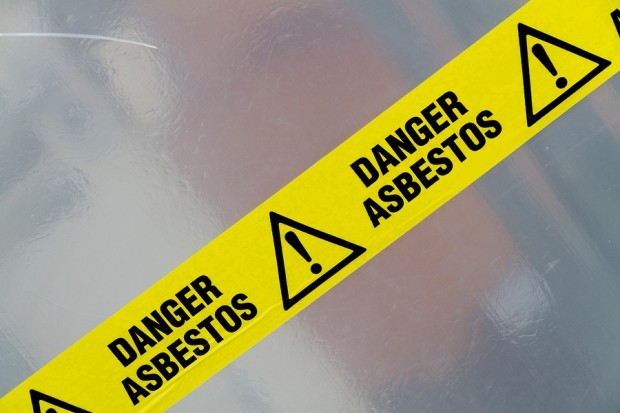Last month, I was invited to speak at the Casualty Actuarial Society Loss Reserving Seminar in Chicago, where I had the opportunity to challenge the existing techniques designed to measure prospective casualty catastrophe risk.
I began by asking the attendees two questions:
- Do insurers garner risk-appropriate pricing for general liability and excess casualty insurance?
- Why not?
In the wake of the collective head shaking, I shared my hypothesis: the existing data used to evaluate individual risks and collective portfolio aggregations are proxies unable to clearly connect the risk drivers to the policyholder. This existing data is not compelling enough to overcome the status quo—qualitative debates on the value of risk management and which insureds are “best in class,” over-reliance on yesterday’s claims and misperceptions related to the importance of revenue.
From there, I shared my observations on the challenges created by the inability to accurately account for accumulation risk:
- Underwriters don’t have the tools or incentives to evaluate how an individual policy relates to the portfolio’s accumulated casualty cat exposure and consequently, their exclusive focus is idiosyncratic risks associated with their particular opportunities.
- Actuaries and enterprise risk managers can describe previous loss experiences and offer proxies for future performance based on past experience, but cannot define the relationships between specific exposures and prospective portfolio aggregations. Consequently, they cannot provide meaningful strategic guidance on underwriting strategies, the value of exclusions or portfolio steering.
Based on previous conversations with underwriters and actuaries, I posited that liability risk is currently measured largely on the basis of three key variables:
- Revenue
- Industrial classification
- Loss history
Let’s examine each in turn.
History provides several examples to indicate that revenue is not a useful measure of future liability risk. Consider these examples:
- Breast implants. Dow Corning was bankrupted by product that generated approximately 1 percent of its revenues.
- Vaginal mesh. For many of the manufacturers, the relative and actual revenues were so low that their underwriting submissions did not require disclosure of those revenue figures despite aggregate settlements exceeding several billion dollars, according to discussions I have had with several commercial liability insurance executives.
- Asbestos. Many of the bankrupted companies had no revenues associated with asbestos directly as they integrated the flame retardant into a wide array of products. The commonality of the exposure and the related legal liability drove the losses not the associated revenues of the companies as indicated by the tremendous variation of revenues of the 118 industrial (not including insurers) companies bankrupted since 1982.
Turning in industrial class, insurers use SIC, NAICS and ISO to classify and measure aggregation liability risks. While the information for this analysis is readily available, its predictive power is suspect as in some cases risks are overestimated and in others, under-appreciated. Three specific examples to challenge this notion:
- Litigation is based on exposure not industry. The five digit NAICS for organic chemicals is 32519 and within the same classification you will find fertilizer companies selling to agri-businesses and plastics manufacturers making components for consumer products. While both types of companies share the same classification, they do not make or use a single common chemical or product. When considered by exposures, these two companies create diversification rather than correlation in a portfolio.
- Relationships among and between industries are not independent. The different industrial codes are almost universally accounted for as independent of each other. In fact, correlation exists as many industries make and use the same materials, components, chemicals and products. Based on industrial footprint, organic chemicals (NAICS 32519) is highly correlated from an exposure-based perspective to an array of other industries including adhesives, synthetic rubber, paints and coatings and cosmetics.
- Not every company in a particular industry makes or uses the same chemicals, products, components or processes. If asked by a rating agency or investor to foresee the consequences of a prospective litigation exposure, such as BPA, one approach is to add limits within a NAIC, SIC or ISO code or program associated with organic chemicals. However, less than 15 percent of companies in NAICS 32519 (organic chemicals) manufacture BPA.
And litigation risk in the United States is not limited to the manufacturer. The entire responsible stream of commerce is involved—creating an over-estimation of the risk to one industry and simultaneously, unforeseen clash across industries.
What about loss history?
While claims data drives an insurer’s differential advantage in many lines such as auto, home, property cat, health and life, as well as idiosyncratic or attritional events in casualty, it’s not as useful when loss drivers are not understood and the risk environment is fast-moving and dynamic.
1. Mass litigation fundamentally changes the risk landscape going forward. Subsequent to being proven to cause bodily injury or environmental damage, products or exposures are removed from the market, companies go bankrupt, terms and conditions change. In other words, the landscape fundamentally shifts in a manner that precludes previous experience from forecasting future outcomes.
Further, in practice, the outcomes of litigation or settlement related to a past claim are uncorrelated to a future case. In other words, plaintiff attorneys, judges and juries do not consider whether a company was involved in an asbestos case in 2000 when deciding their potential liability to a diesel fumes case in 2016.
2. Science and Law Considerations Missing.While last year’s car accident rates are very useful in predicting next year’s auto insurance landscape, the loss drivers of casualty catastrophe are not found in claims data. At Praedicat, we have found the most important variables include how specific exposures relate to science, law, industrial settings, diseases and insurance policies.
3. The Asbestos Number is Still Uncertain. Finally, and perhaps most persuasively, despite the surfeit of data available on asbestos losses, the insurance industry has struggled mightily to properly account for, reserve or forecast prospective asbestos losses. The severity of this challenge resonates among insurance executives and investors in several ways. A.M. Best cites deficient loss reserves as the primary cause of past financial impairments among property and casualty insurers and many casualty insurers trade below book value in part due to uncertainty related to long-tail reserves.
Looking ahead, our CEO, Bob Reville, refers to as the “Golden Age of Casualty”—an industry delivering sustainable profits, new product innovation and greater relevance to their clients and society. This future is underpinned by forward-looking, exposure-based modeling driven and understanding the relevant loss drivers necessary to probabilistically quantify the catastrophe component of casualty risk.
At Praedicat, we believe these advances will address the gaps created by using claims, revenue and industrial classification to predict future casualty accumulation risk and in turn, create opportunities to make more risk insurable. Furthermore, and most importantly, if insurers are able to accurately price exposure-based risk, incentives will be created for cleaner and safer corporate behavior and insurers will be able to avoid unforeseen exposures to existential accumulation risks.
































